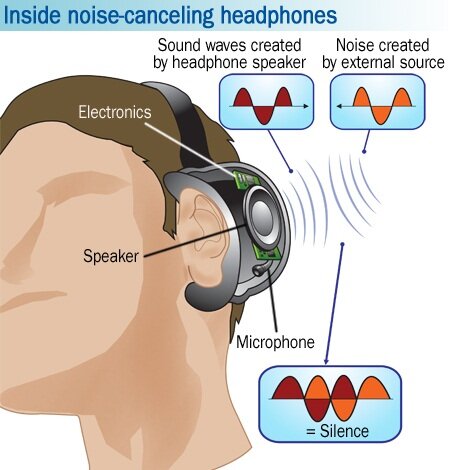Launched just a few weeks ago, the ROG Vulcan ANC gaming headset has received praise from the media for its stylish design, comfort and audio quality. To understand more about the audio quality, we’ll have to get a bit technical to find out what makes the Vulcan so good.
The ANC in Vulcan ANC stands for Active Noise Cancellation, and as one would surmise, it cancels out other noises so you hear the audio you want, without the distraction from the surrounding world. It differs from PNC (Passive Noise Cancellation), where you reduce all ambient noise by blocking sound waves from reaching your ear drum (ie, ear plugs). But just where did this technology come from, and how exactly does it work? For that, we’ll have to go back to the early jet engine days of aviation.
ANC technology has been used widely in the aviation industry since the 1950′s to cancel the ear-damaging volumes of noise found in helicopter and airplane cockpits. With decibel levels around 90-150dB, prolonged exposure would result in hearing loss and eventual deafness. ANC works by producing a sound wave that is in effect, the inverse of the ambient noise being emitted, there by neutralizing, or cancelling out the sound.
After decades of research, ANC technology became small and cheap enough to where the first commercialized and mass produced headphones were released in the late 80′s, and have since found their way to the mainstream consumer. Seeing as the Vulcan ANC is geared towards the gaming audience, it has been optimized even further to effectively cancel out the sounds that gamers would most likely encounter in the real world, such as loud computer fans and the steady hum of hard disk drives.
Related Articles
-
http://twitter.com/cloudsmesh Vishal

